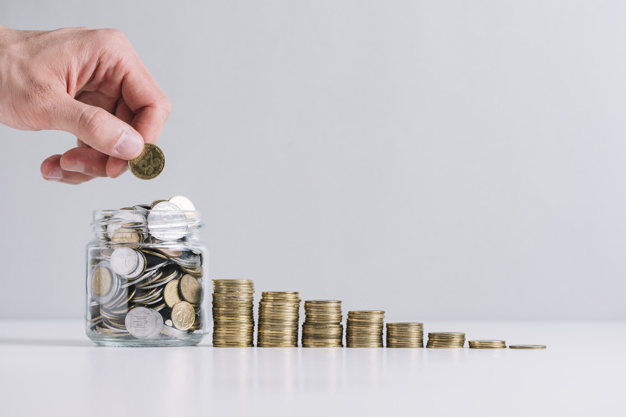If you have a loan that’s too expensive or too risky to live with, you often can refinance into a better loan. Things may have changed since you borrowed money, and several ways may be available for you to improve your loan’s terms. Whether you’ve got a home loan, auto loans, or other debt, refinancing allows you to shift the debt to a better place.
What Is Refinancing?
Refinancing replaces an existing loan with a new loan that pays off the debt of the old loan. The new loan should have better terms or features that improve your finances. The details depend on the type of loan and your lender, but the process typically looks like this:
- You have an existing loan you would like to improve in some way.
- You find a lender with better loan terms, and you apply for the new loan.
- The new loan pays off the existing debt completely.
- You make payments on the new loan until you pay it off or refinance it.
Advantages
Refinancing can be time-consuming and expensive, and a new loan might be missing attractive features that an existing loan offers. However, refinancing has several potential benefits:
- Save money. A common reason for refinancing is to save money on interest costs. To do so, you typically need to refinance into a loan with an interest rate that is lower than your existing rate. Especially with long-term loans and large dollar amounts, lowering the interest rate can result in significant savings.
- Lower payments. Refinancing can lead to lower required monthly payments. The result is easier cash flow management and more money available in the budget for other monthly expenses. When you refinance, you often restart the clock and extend the amount of time you’ll take to repay a loan. Since your balance is most likely smaller than your original loan balance and you have more time to repay, the new monthly payment should decrease.
- Shorten the loan term. Instead of extending repayment, you also can refinance into a shorter-term loan. For example, you might have a 30-year home loan, and that loan can be refinanced into a 15-year home loan that typically will come with a lower interest rate. Of course, you can also just make extra payments without refinancing to avoid paying closing costs and keep the flexibility of not being required to make those larger payments.
- Consolidate debts. If you have multiple loans, it might make sense to consolidate them into one single loan, especially if you can get a lower interest rate. It’ll be easier to keep track of payments and loans.
- Change your loan type. If you have a variable-rate loan, you might prefer to switch to a loan at a fixed rate. A fixed interest rate offers protection if rates are currently low, but expected to rise.
- Pay off a loan that’s due. Some loans, particularly balloon loans, have to be repaid on a specific date, but you might not have the funds available for a large lump-sum payment. In those cases, it might make sense to refinance the loan—using a new loan to fund the balloon payment—and take more time to pay off the debt. For example, some business loans are due after just a few years, but they can be refinanced into longer-term debt after the business has established itself and shown a history of making on-time payments.
Disadvantages
Refinancing is not always a wise move. Upfront costs might be too high to make it worthwhile, and sometimes the benefits of a current loan outweigh the savings associated with refinancing.
- Transaction costs. Refinancing can be expensive. Especially with loans like home loans, closing costs can add up to thousands of dollars. You want to make sure you’ll come out ahead before you pay those costs. Other types of loans, including loans from online lenders, can include processing and origination fees.
- Higher interest costs. Refinancing can backfire. When you stretch out loan payments over an extended period, you pay more interest on your debt. You might enjoy lower monthly payments, but that benefit can be offset by the higher lifetime cost of borrowing. Run some numbers to see how much it really costs you to refinance. Do a quick loan amortization to see how your interest costs change with different loans.
- Lost benefits. Some loans have useful features that will be eliminated if you refinance. For example, federal student loans are more flexible than private student loans if you fall on hard times. Plus, federal loans might be partially forgiven if your career involves public service. Likewise, keeping a fixed-rate loan might be ideal if interest rates skyrocket—even though you’d temporarily get a lower rate with a variable-rate loan.
What Doesn’t Change
While refinancing can change the terms of a loan, some aspects of loans do not change with refinancing.
- Debt. Your loan balance will not change unless you take on more debt while refinancing. It’s possible to do cash-out refinancing or roll your closing costs into your loan, but that just increases your debt burden.
- Collateral. If you used collateral for the loan, that collateral probably will still be required for the new loan. For example, refinancing your home loan means you still could lose the home in foreclosure if you don’t make payments. Likewise, your car can be repossessed with most auto loans. Unless you refinance into a personal unsecured loan, the collateral is at risk. In some cases, you actually can increase the risk to your collateral when you refinance. Some states allow nonrecourse home loans to become recourse loans after refinancing.
When to Refinance
Saving money is an obvious motivation for refinancing, but in at least a couple of specific instances, you’d be wise to look into refinancing a loan.
- Improved credit score. If you’ve recently come out of a difficult financial situation that damaged your credit score, you might have a loan or two with a high-interest rate. Maybe you lost your job or got divorced or had a medical emergency that left you buried in debt. Maybe you even had to file for bankruptcy. Regardless of the reason, if you had to get a car loan or some other loan while your credit score was low, your interest rate will reflect that. The good news is that once you’ve improved your credit score, you likely can refinance those loans at a significantly lower rate.
- Home renovation/addition. If you have a lot of equity in your home, you can reinvest that equity in your home to make some long-needed repairs or just to renovate the property with an additional room, a swimming pool, or whatever you desire. Assuming your credit is good, you can do what is called a cash-out refinance.
Let’s say you purchased a home for $250,000 and it now has a market value of $300,000. When you took out the mortgage, you made a down payment of $50,000 and you’ve paid another $50,000 toward the principal. That means you owe $150,000 on a home with a market value twice that amount. If you need $25,000 for home repairs, you could refinance your mortgage for $175,000. The $150,000 you still owe on the current mortgage would be paid off, the extra $25,000 would be paid to you, and you’d have a new payoff amount of $175,000. Depending on available interest rates and the length of the new mortgage, you might even be able to lower your monthly payments with this kind of transaction.
How to Refinance
Refinancing is like shopping for any loan or mortgage. First, take care of any issues with your credit so that your score is as high as possible. Then shop around to find the best rate and the best terms.
Get a few quotes before inquiring with your current lender. For example, if you’re thinking of refinancing your home, see what kind of rates you can get from competitors before inquiring about what your current lender is willing to do. If your current lender wants to keep your mortgage, you might be able to get even better terms.














